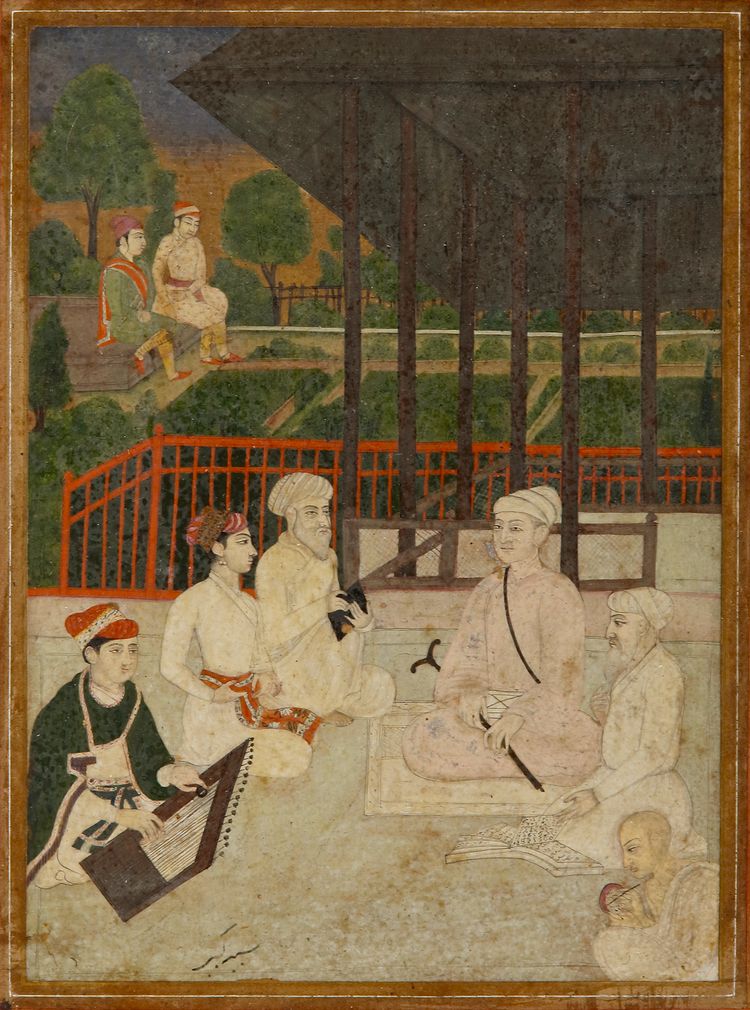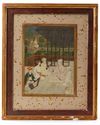THE MYSTIC AND POET KABIR WITH ATTENDANTS, INDIA, MUGHAL, LATE 17TH-EARLY 18TH CENTURY
Gouache on paper heightened with gold, inscription to lower edge, framed. Painting: 22 by 17 cm.
PROVENANCE Formerly in the collection of the artist Einar Jolin (1890-1976) Stockholm. Inscription on the back: ‘Acquired from Trägård in Gothenburg by Einar Jolin 1947.
CATALOGUE NOTE Kabir was a fifteenth-century mystic saint and poet who is revered by both Hindu and Sikh followers. His teachings and poetry greatly influenced the Bhakti movement and his verses are found in the Sikh manuscript of Adi Granth. Born into a Muslim family of weavers, he later followed the teachings of the fourteenth-century Vaishnava devotional poet and Bhakti leader Ramananda. Kabir is believed to have lived in Benares in an area later named Kabir Chaura. In 1915 Rabindranath Tagore compiled and translated One Hundred Poems of Kabir, that remains a source of reference for the Bhakti movement. It is believed that Kabir died in 1518, at Maghar, where there was a dispute between Hindus who wanted to burn his corpse and Muslims who wished to bury him. However when the sheet covering Kabir's body was lifted it revealed a mound of flowers (Muraqqa 1996, p.63). Other depictions of Kabir often show him surrounded by musicians or weaving, a reference to his upbringing. A Mughal painting in the St Petersburg Muraqqa', dated late seventeenth century to early eighteenth century, depicts Kabir the mystical weaver with a disciple and young visitors (ibid., Pl.40).


